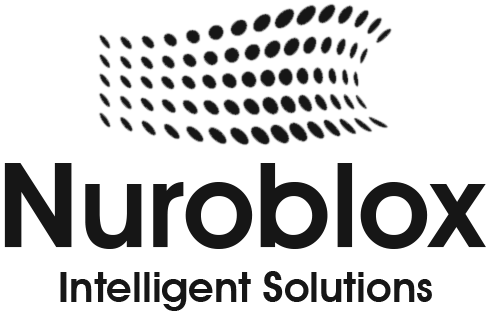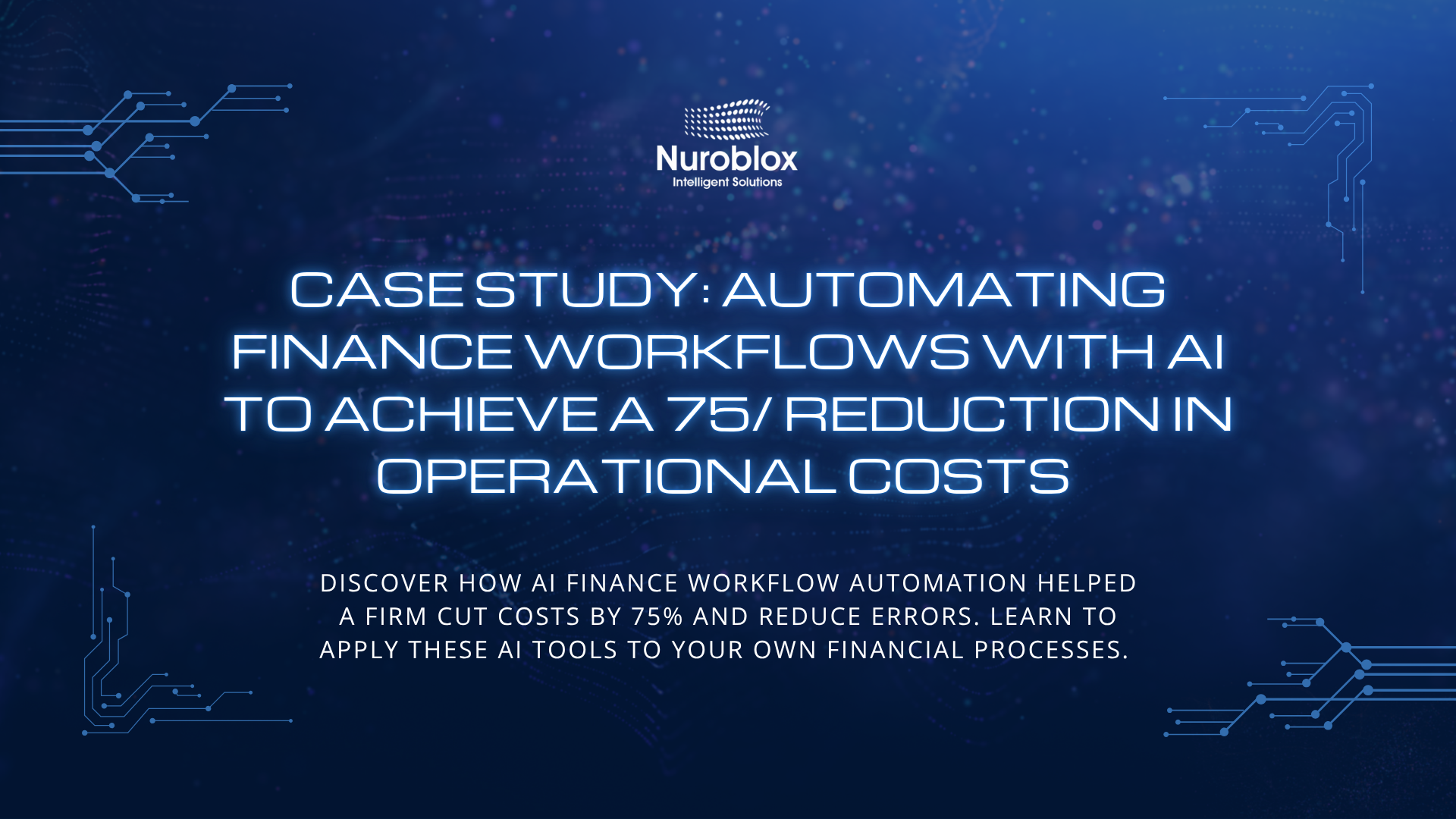Case Study: Automating Finance Workflows with AI to Achieve a 75% Reduction in Operational Costs
The finance department, traditionally viewed as a cost center focused on historical reporting, is undergoing a seismic shift. In an era defined by volatility and the demand for real-time insights, manual, repetitive tasks are no longer just inefficient; they are a direct impediment to strategic growth. The reliance on spreadsheets, manual data entry, and lengthy reconciliation processes exposes organizations to costly errors, compliance risks, and a critical lack of agility. For finance leaders, the mandate is clear – evolve or be left behind.
This case study delves into the transformation of a mid-sized manufacturing firm, “Global-Tech Manufacturing,” which was grappling with these exact challenges. Plagued by slow accounts payable cycles and cumbersome financial planning and analysis (FP&A), their finance team was trapped in a cycle of reactive work. By strategically implementing AI-powered workflow automation, Global-Tech not only broke free from these constraints but also redefined its finance function as a strategic driver of business value. This analysis will break down the challenges, the implemented AI solutions, the quantifiable results including a 75% reduction in process costs and a 90% decrease in invoice processing time and the roadmap for other organizations to follow suit.
The Breaking Point – When Manual Processes Cripple Growth
Before its AI transformation, Global-Tech’s finance department operated under immense strain. The team of 15 specialists spent an estimated 60% of their time on manual, low-value tasks. This operational friction created significant bottlenecks that directly impacted the company’s financial health and strategic decision-making.
The two most critical pain points were –
- Accounts Payable (AP) Inefficiency – The AP process was entirely manual. Invoices arrived in various formats PDF, email, paper) and required manual data extraction, validation against purchase orders, and entry into the ERP system. This led to an average invoice processing time of 10 days, a high error rate of 8%, and frequent late payment penalties. It also damaged supplier relationships and prevented the company from capturing early payment discounts.
- FP&A Lag – The financial planning and analysis team struggled with data consolidation for its month-end close, which took over 12 days to complete. Forecasting was based on historical data exported into complex spreadsheets, making it slow, prone to human error, and unable to incorporate real-time market variables. As a result, forecast accuracy was low, and the leadership team lacked the timely insights needed to navigate market fluctuations.
The Solution – A Strategic Deployment of AI Automation Tools
Recognizing that incremental improvements would be insufficient, Global-Techʼs CFO championed a full-scale adoption of an AI-powered automation platform. The goal was not just to speed up existing processes but to fundamentally re-engineer them for resilience and strategic value. The implementation was rolled out in two targeted phases.
Phase 1 – Revolutionizing Accounts Payable with Intelligent Document Processing
The first step was to automate the end-to-end accounts payable workflow. The solution centered on Intelligent Document Processing (IDP), a technology that combines Optical Character Recognition (OCR) with AI and machine learning to understand and process complex, unstructured documents like invoices.
The new automated workflow functioned as follows –
- Automated Ingestion – AI agents continuously monitored designated email inboxes and scanned document folders, automatically ingesting all incoming invoices regardless of format.
- Intelligent Data Extraction – The IDP model extracted key information such as vendor name, invoice number, line-item details, and totals with over 99% accuracy. The system was trained on Global Tech’s specific invoice formats and learned to improve over time.
- Three-Way Matching – The extracted data was automatically validated against purchase orders and goods receipt notes within the ERP system. Any discrepancies were flagged and routed to the appropriate team member for exception handling, while clean invoices proceeded without human intervention.
- Seamless ERP Integration – Approved invoices were automatically posted to the ERP system, creating a clean, digital audit trail and initiating the payment process.
Phase 2 – Empowering FP&A with Predictive Analytics and AIDriven Reporting
With the AP process streamlined, the focus shifted to FP&A. The objective was to transform financial reporting from a historical exercise into a forward-looking, strategic function. This was achieved by deploying AI and machine learning models for forecasting and automated reporting.
The key components of the FP&A transformation included –
- Automated Data Consolidation – AI agents were configured to automatically pull data from disparate sources, including the ERP, CRM, and external market data APIs, eliminating the need for manual data gathering.
- AI-Powered Forecasting – The platform utilized machine learning algorithms to analyze historical data and identify complex patterns. By incorporating real-time variables such as supply chain disruptions, sales pipeline data, and macroeconomic indicators, the AI model generated probabilistic forecasts that were significantly more accurate and dynamic than the previous static models.
- Real-Time Dashboards – Interactive dashboards were created to provide stakeholders with on-demand access to key financial metrics and variance analysis. The month-end reporting package was generated automatically, freeing the FP&A team to focus on interpreting the data and providing strategic recommendations.

The impact of AI automation on Global-Tech’s finance department was transformative, delivering both quantifiable efficiencies and profound strategic advantages.
Quantifiable Business Impact
| Metric | Before AI Automation | After AI Automation | Improvement |
| Invoice Processing Time | 10 days | Less than 24 hours | 90% Reduction |
| Cost Per Invoice Processed | $15.70 | $3.90 | 75% Reduction |
| Invoice Error Rate | 8% | Less than 0.5% | 94% Reduction |
| Month-End Close Cycle | 12 days | 4 days | 67% Reduction |
| Forecast Accuracy | ~75% | >92% | +17 Percentage Points |
| Early Payment Discounts Captured | 15% | 85% | 467% Increase |
Strategic Transformation
Beyond the hard numbers, the AI implementation fundamentally elevated the role of the finance team. By automating over 8,000 hours of manual work annually, specialists were able to transition from data processors to strategic business partners. The AP team focused on optimizing vendor relationships and working capital, while the FP&A team dedicated their expertise to scenario modeling, identifying growth opportunities, and advising leadership on critical business decisions. The finance department became a true center of excellence, driving agility and competitive advantage.
Your Roadmap to AI-Powered Financial Automation
Global-Tech’s success provides a clear blueprint for other organizations seeking to modernize their finance operations. The journey from a manual, reactive cost center to an automated, strategic powerhouse is not only possible but essential for survival and growth in today’s economy. The technology to eliminate bottlenecks, mitigate risk, and unlock data-driven insights exists today.
The crucial question for finance leaders is no longer if they should adopt AI automation, but how quickly they can act to build a finance function that is fit for the future. Is your organization prepared to make that leap?


